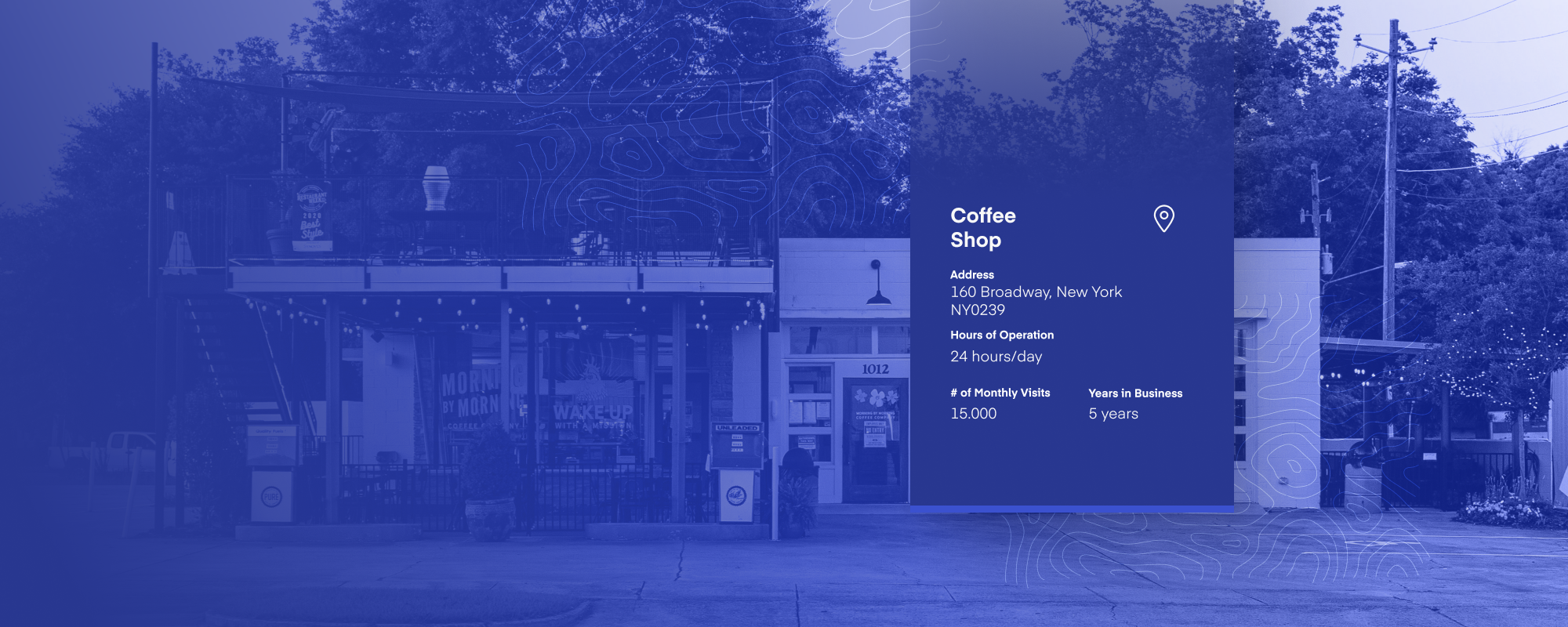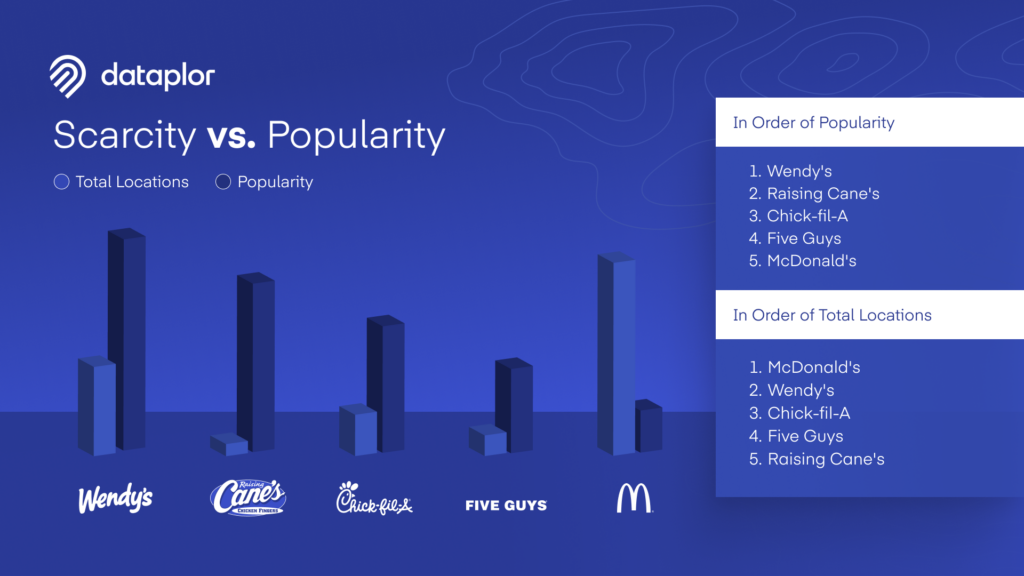
Data-Driven Property Valuation: The Power of Foot Traffic Trends
When making commercial real estate decisions, you should go beyond just evaluating the physical location. You also need to understand the living, breathing ecosystem surrounding a property. According to the National Association of Realtors, foot traffic data has a strong link to future sales and contracts being made, making it a critical metric for investors and property developers.
Foot traffic refers to the movement of people through a specific area and has become a pivotal indicator of commercial property potential.
By leveraging advanced mobility data and foot traffic analytics, real estate professionals can gain actionable retail foot traffic insights far beyond traditional assessment methods.
Why Foot Traffic Matters in Commercial Real Estate
Historically, property valuation relied on traditional metrics: square footage, location, and basic demographic information. Today, foot traffic software has revolutionized this approach, offering granular insights that were previously impossible to capture.

Source: dataplor
Key dimensions of foot traffic analysis include:
- Aggregated pedestrian counts
- Temporal trends (daily, weekly, monthly, yearly)
- Peak hour variations
- Seasonal fluctuations
So, how does this impact CRE? The correlation between how you count foot traffic and property value is valuable:
- High foot traffic indicates a higher business potential
- Consistent pedestrian movement suggests economic stability
- Traffic fluctuations can reveal emerging market shifts
- Visitor behavior provides insights into local economic health
How Foot Traffic Enhances Property Valuation
Foot traffic insights provide a multi-dimensional view of a property’s potential. These trends help professionals assess retail business viability, evaluate location attractiveness, identify high-potential customer bases, and understand seasonal and event-driven variations.
Location data can help retail store managers:
- Identify peak hours of customer engagement
- Understand customer dwell times
- Analyze conversion rates
- Optimize retail store design and layout
For realtors and commercial property valuation, foot traffic counts can help:
- Assess potential rental income
- Evaluate location attractiveness
- Predict future property value trends
- Compare different property locations objectively
Within marketing and business strategy, foot traffic data can help:
- Design targeted advertising and marketing campaigns
- Understand customer demographics
- Optimize staffing levels
- Identify potential business expansion opportunities
For instance, a retail location with consistent foot traffic during peak hours might command a premium, while an area showing growth in visitor behavior could signal an emerging market opportunity.
By leveraging advanced data analytics, real estate professionals can unlock a treasure trove of insights across these areas. Check out our foot traffic data guide for further information.
Integrating Foot Traffic with Other Data Sources
Accurate property valuation requires a holistic, data-driven approach. By combining foot traffic data with complementary datasets, professionals can create a 360-degree assessment across the following areas:
- Points of Interest (POI) Data: With foot traffic data, you can map surrounding businesses, better understand the local ecosystem, and identify complementary and competitive establishments.
- Economic Indicators: Foot traffic data helps assess area economic health, track employment trends, and understand income distribution.
- Market Trends: Finally, you can evaluate property sales dynamics, monitor rental market fluctuations, and identify emerging investment opportunities.
dataplor’s unique global data schema ensures that these integrated insights remain consistent and comparable across different regions.
Key Considerations When Choosing a Foot Traffic Data Provider
Selecting the right foot traffic data provider can mean the difference between making informed, strategic decisions and falling prey to incomplete or inaccurate insights.
Choosing a foot traffic data provider requires careful evaluation across multiple critical dimensions.
The ideal provider should offer a comprehensive, reliable, and privacy-conscious approach to location intelligence that transforms raw data into actionable business insights.
Data Accuracy and Reliability
Businesses must verify a provider’s data verification process, looking beyond surface-level collection methods. This means examining the provider’s track record of precision, understanding their approach to human verification, and assessing the frequency and rigor of data updates.
A truly exceptional provider goes beyond algorithmic collection, incorporating human expertise to validate and refine data points.
Geographic Coverage
The most valuable foot traffic data providers offer extensive global reach, demonstrating expertise across international markets. This goes beyond simply collecting data in multiple countries and requires a nuanced understanding of regional address formats, cultural variations, and local business landscapes.
Providers like dataplor, which covers over 250 countries, understand that true global intelligence means maintaining a consistent data schema while respecting local complexities.
Data Privacy and Compliance
The ideal foot traffic data provider prioritizes GDPR compliance and implements robust privacy protection mechanisms. This means instilling an industry practice of using anonymized, aggregated data that protects individual identities while still providing meaningful insights.
Reputable providers carefully filter out sensitive locations, ensure no personally identifiable information is collected in reports, and maintain transparent data collection methodologies while ensuring peak performance.
Red Flags to Watch Out For
Exercise caution with data providers who cannot transparently explain their collection methodology, lack consistency in global data, or offer unrealistically low-cost solutions. The most reliable providers demonstrate a commitment to data quality, global expertise, and privacy protection.
Ultimately, the right foot traffic data provider should feel like a strategic partner. dataplor’s location intelligence solutions offer a comprehensive approach that goes beyond simple data collection, providing actionable insights that can transform business strategy.
The Power of Foot Traffic Trends in Property Valuation
As technology advances, foot traffic trends will become increasingly sophisticated. Future developments may include:
- More precise movement tracking
- Enhanced predictive capabilities
- Deeper integration with AI technologies
- More comprehensive privacy protections
- Real-time global insights
Ready to revolutionize your property valuation strategy? Explore our comprehensive data offerings and unlock the full potential of data-driven decision-making.
After all, location is no longer just a point on a map. It’s a dynamic, evolving ecosystem of human movement, economic potential, and market opportunity.


